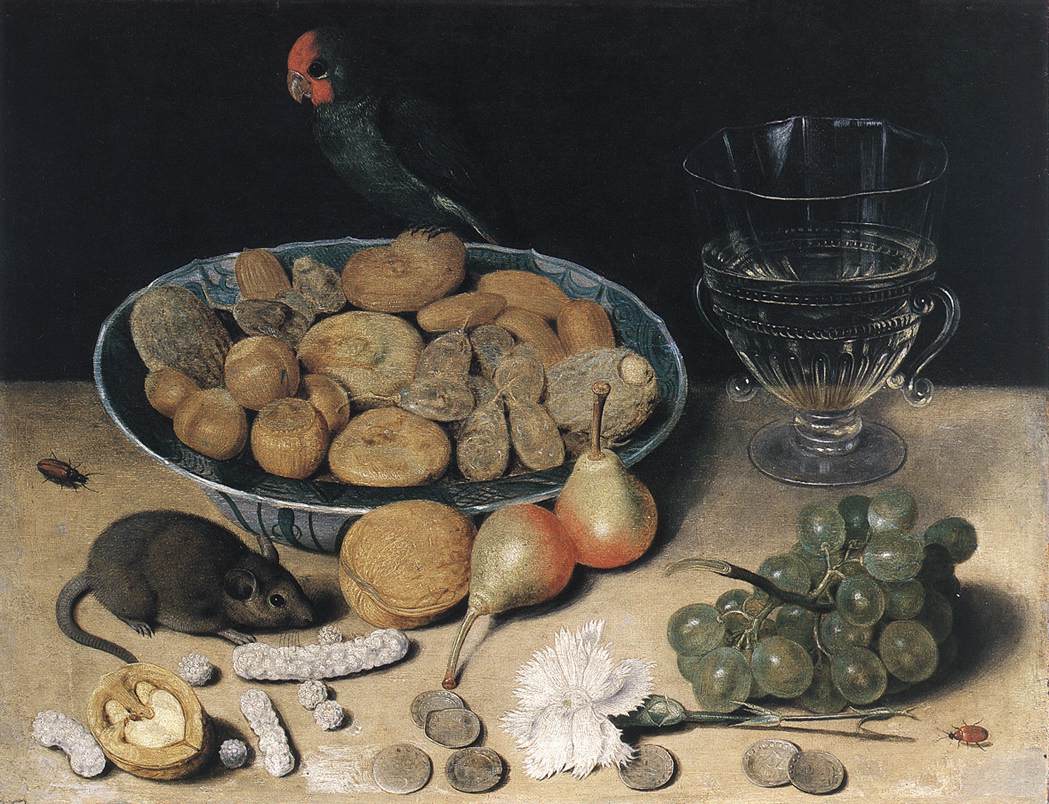Description
The painting "Dessert Still-Life" by Georg Flegel is a masterpiece of German Baroque art. In this work, the artist presents a complex and detailed composition, showing a variety of fruits, cakes and sweets arranged on a table covered with a white tablecloth.
The artistic style used by Flegel in this painting is characteristic of the German Baroque, where precision in the representation of objects and attention to detail are emphasized. In addition, the artist uses a chiaroscuro technique, which allows him to create an effect of depth and volume in the painting.
The composition of the work is very interesting, as Flegel uses a symmetrical approach to present the objects. The table in the center of the painting divides the image into two equal parts, and the objects are arranged in a balanced manner on both sides of the table.
The color in the work is vibrant and attractive. Flegel uses a palette of warm colors, such as orange, yellow, and red, to represent fruits and pastries. These colors contrast with the dark background of the painting, making the objects stand out even more.
The history of the painting is interesting, as it is believed to have been created in the 1630s, during the Thirty Years' War in Germany. Despite the difficult political and economic situation in the country at the time, Flegel managed to create an exceptional work of art that shows the beauty and richness of everyday life.
As for little-known aspects of the painting, it is known that Flegel was a very prolific artist who created many works similar to "Dessert Still-Life". Additionally, it has been suggested that the painting may have symbolic meaning, representing abundance and prosperity in difficult times.
In short, Georg Flegel's "Dessert Still-Life" is an exceptional work of art that showcases the artist's ability to create a complex and detailed composition. The chiaroscuro technique, the warm color palette and the symmetry of the composition make the painting attractive and vibrant. Furthermore, the history and possible symbolic meanings of the work make it a fascinating piece of German Baroque art.

